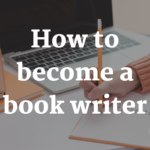In this illuminating interview, Bridget Austin engages in a captivating conversation with Shamila Iyer, a seasoned writer, editor, and author coach. With a passion for empowering aspiring writers, authors, and entrepreneurs, Shamila’s expertise lies in helping individuals create content that not only captivates but also forms meaningful human connections.
As the interview unfolds, we delve into the multifaceted world of editing, shedding light on the fundamental question: “What does a book editor do?” Join us on this enlightening journey into the art and craft of editing, where the power of words and the essence of human connection converge.

1. Can you provide an overview of a book editor’s primary responsibilities in the publishing process?
A book editor’s primary responsibility is to ensure that the manuscript is of a high standard in terms of quality and coherence. They are what stands between a rough draft and a polished manuscript ready for publication. Highly skilled book editors can contribute greatly to the success of a book.
2. What distinguishes the roles of developmental editors, copyeditors, and proofreaders, and how do they contribute to the editing process?
There are four different stages of editing and some editors specialize in one or more. Others offer all four as a comprehensive editing package.
Developmental editors review a manuscript for structure and content. They focus on the big picture, helping authors with the overall flow.
For fiction books, they address issues such as plot structure, character development, and pacing.
Line editors focus on the content. They look at individual paragraphs and sentences and how to hone the writing to make it stronger.
Copyeditors refine language and style by diving into the details. They also ensure that manuscripts are consistent with the publisher’s style guide.
Proofreaders work with the final draft to catch all the grammar, typos, formatting, and punctuation errors.
To answer this question in more detail, I’d like to refer readers to an article I wrote on the different types of editing (with a downloadable PDF). It describes the four editing stages in detail and all the steps involved.
3. How do you collaborate with authors during developmental editing to refine their manuscripts?
We begin by meeting over a Zoom call after initial contact. To me, this is a crucial first step. It’s where I delve into the author’s purpose for writing the book and who they envision reading the book. I need to understand their why so I can keep that in my head while editing, to stay on track with their vision. During this chat, I also get a sense of the author’s voice and style. Maintaining these two aspects during any editing stage is important.
After the chat, I will do a quick read-through of the manuscript, making suggestions as I go along. I then review it again, adding detailed notes, my thoughts, and questions. We use MS Word or Google Docs tracking because they are more interactive.
The doc goes back to the author, who can implement the suggestions or request a follow-up call to discuss the suggestions and get further clarity.
This type of collaboration requires open communication and continuous, constructive feedback.
It is important to approach this phase with sensitivity, as authors have a deep connection to their work.
4. What challenges commonly arise during book editing, and how do you address them?
The biggest challenge I’ve encountered is when the manuscript is a rough first or second draft and you have to convince the author that it needs more work before they approach an editor. I have had cases where I’ve had to send the manuscript back to an author to do some self-editing before returning it to me. This saves them time and decreases costs.
Another challenge is when authors do not keep to their own deadlines and I have to wait weeks or months for them to return their manuscripts after implementing the suggestions. This can often cause scheduling conflicts for me.
A common challenge editors face is author resistance to suggested changes — more on how I deal with this later.
5. Balancing the author’s voice and clarity in the manuscript is crucial. Can you explain your approach to achieve this balance?
This can sometimes be one of those challenges we discussed earlier, but if one clearly understands the author’s intentions and style, this can be easily handled. Collaborative discussions between author and editor help to find the right balance. At all times, the editor needs to be respectful of the author’s vision.
6. How do you handle disagreements or conflicts with authors regarding suggested changes?
Hmmn… I’ve never had any. I have had slight differences of opinion with a couple of authors occasionally. But I always make it clear to an author in the first meeting that my suggestions are just that — suggestions.
They ultimately decide to either reject or accept my suggestions.
For instance, if I do not believe that a certain piece of content (maybe an example or anecdote) fits into the context or may appeal to the intended reader, I recommend the author tweak it, move it, or remove it. Some authors have hung onto that piece and that is their prerogative. I can only advise and put forward my reasons.
Often, we end up finding common ground. The author understands that at the end of the day, we have the same goal – to create the best possible manuscript.
7. Are there specific editing considerations for different book genres, and can you provide examples?
Yes, there are. Firstly, editing fiction and non-fiction is not the same. Then, there are the niches within these two broad categories. They each have different tones and styles. Non-fiction self-help books, for example, require a more conversational tone. Academic works require rigorous fact-checking and citation accuracy. Editors must take into consideration the different genre requirements when editing.
8. How has the role of book editors evolved in the digital age, and what advice do you have for editors seeking opportunities in this changing landscape?
Learn how to edit ChatGPT, Bard, and the others. I’ve noticed that many businesses are using automated writing tools to write their blog articles and lead magnet books. But they end up advertising for an editor to “humanize” the content. I think it is easier to write an article from scratch than rewrite an AI-produced article, so I don’t touch those types of writing or editing projects.
However, there is a market out there, and if you are starting out, you could tap into that market while establishing yourself as an editor and building up your portfolio. Also, try to focus on which type of editing you prefer. You cannot do them all until you have enough experience. Copy editors and proofreaders are the most popular editing jobs out there.
My advice to editors entering this changing digital landscape is to build a strong online presence (which I am currently doing because I am a dinosaur), network within your niche, and hone your digital skills. One should also keep an eye on changes in the publishing industry.
Today, an editor’s role can also encompass assisting an author with marketing and promotional strategies for their books. Therefore, one should look into developing one’s marketing skills and learn more about how to promote books, especially e-books, which have become so popular.
9. What advice would you give to new editors looking to build a portfolio and secure editing jobs in the industry?
If you are an aspiring editor, I suggest you build your portfolio using sample edits and previous projects. Take screenshots of work in progress and show the before and after. Remember to get your client’s permission first before showcasing their work.
Don’t be afraid to take on small jobs when you start — that’s how you build your reputation. Establish a good relationship with clients and bag yourself a few good reviews. And never stop learning and honing your skills as an editor.
Choose your niche and build your skills in that niche until you are an expert before tackling a different niche. Focus on the niche you like. For instance, there is a lot of demand for Romance book editors, but I am not even tempted. I work with non-fiction (mainly self-help and business books), and that is where I am happy.
Join social media editing groups or editing associations to learn and network with others in the field. At the same time, explore how you can gain certifications in editing or what good courses are available to improve your editing skills and knowledge.
10. Could you share your personal journey of how you started your career as a book editor, including your inspiration and key steps in establishing yourself in the field?
Naturally, it all started with my love for reading. I have and always will be a book nerd.
I did not plan to be a book editor; I stumbled into this niche accidentally. I am first a writer and now also an author/ book coach. Editing is one of the services I currently offer—writing, editing, and coaching.
After having worked with Macmillan Publishers as an author, they asked me to review and edit some of their other books. I loved the reviewing aspect and providing a bird’s eye perspective on the content and structure of the books.
My passion leans more toward the developmental and line stages of book editing. I don’t put myself out there as a copyeditor or a proofreader. However, if an author prefers that I work with them on all four stages of the editing process, I will offer them a comprehensive editing package.
Nevertheless, I always advise them to get a third set of eyes on the book before publishing, such as Beta readers or an external proofreader. This is especially important for books that are over 60k words.
I guess it was easy for me; I have the background and qualifications (Linguistics and English majors). My experience – working with publishers, writing books, and mentoring aspiring writers – also plays a major role. I am passionate about what I do because I love what I do. It can be challenging, but working with authors to produce the best possible manuscripts is extremely rewarding.
Thanks, Shamila for sharing these great insights with us, we appreciate your view points and we hope readers have learned from them.
Discover how to find an editor in 8 easy steps click here.




